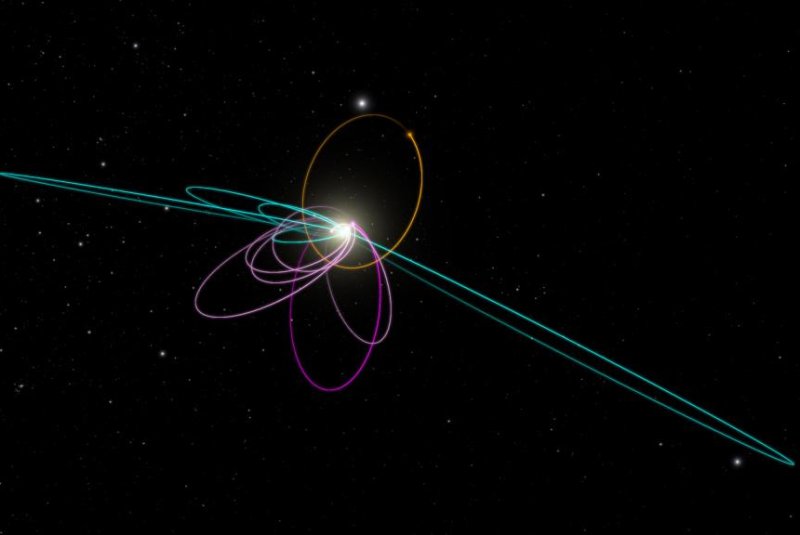1 of 3 | A models built to simulate the 9th planet predicted the existence of other icy objects with orbits perpendicular to the first six Kuiper Belt objects studied by the team of astronomers. Photo by Caltech
PASADENA, Calif., Jan. 20 (UPI) -- Astronomers at Caltech say they've discovered significant evidence of a large, hidden body at the edge of the solar system -- a 9th planet. The team of researchers have dubbed the body "Planet Nine."
The scientists haven't actually seen Planet Nine. No one has. But they've inferred its presence by studying the orbits of several icy objects beyond Neptune. Scientists noticed the orbits of these Kuiper belt objects, or KBOs, feature similar anomalies.
The orbital oddities suggested the objects were all being affected by a singular source, the gravity of a large object.
In a new paper, published in The Astronomical Journal, researchers argue the object is a 9th planet, roughly 10 times the mass of Earth -- a super-Earth.
"If I read this paper out of the blue, my first reaction would be that it was crazy," Mike Brown, an astronomer at the California Institute of Technology and member of the research team, told Nature. "But if you look at the evidence and statistics, it's very hard to come away with any other conclusion."
When Brown and his Caltech colleague Konstantin Batygin looked at the orbits of six sizable KBOs, they found all six of their highly elliptical orbits were aligned.
"The only way to get these objects to line up in one direction is to have a massive planet lined up in the other direction," Brown told NPR.
Brown says the new paper and presence of a hidden 9th planet -- lovingly referred to as "Phattie" -- also help explain the distant orbits of dwarf planets Sedna and Biden, which never venture in as close as models predict.
When they built a model to simulate the existence of a 9th planet and its gravitational effects on the outer solar system, researchers were blown away by the results.
Not only did the model produce the data they had already analyzed, it also the predicted another set of orbital objects they hadn't studied -- KBOs with orbits perpendicular to the orbits of the initial six objects.
"When the simulation aligned the distant Kuiper Belt objects and created objects like Sedna, we thought this is kind of awesome -- you kill two birds with one stone," Batygin said in a press release. "But with the existence of the planet also explaining these perpendicular orbits, not only do you kill two birds, you also take down a bird that you didn't realize was sitting in a nearby tree."
As usual, not everyone's buying in.
"I have seen many, many such claims in my career," said Hal Levison, a planetary scientist at the Southwest Research Institute in Boulder, Colorado. "And all of them have been wrong."
Scott Sheppard, a scientist at the Carnegie Institution for Science who assisted Brown and Batygin in their analysis, understands why some might be skeptical of their paper's conclusions. He says there is more work to do.
"We really need to find more of these objects -- more of these small objects that can lead us to the bigger object," Sheppard said. "I think it's still a toss-up if it's really out there or not. I think we just need more data. Hopefully within the next few years we'll really be able to nail this down."
Brown is more confident.
"I'm willing to take bets on anyone who's not a believer."















